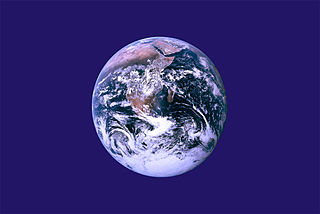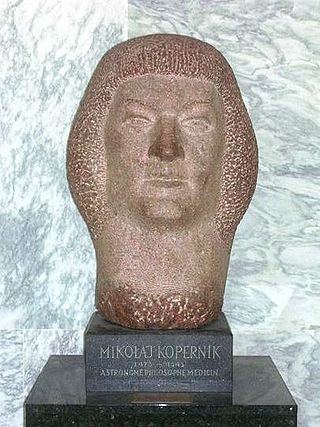| Year | Honoree(s) |
|---|
| 1971 | U Thant, Secretary-General, United Nations |
| 1972 | Kurt Waldheim, Secretary-General, United Nations |
| 1973 | C.V. Narasimhan, Chef du Cabinet, Under-Secretary-General for Inter-Agency Affairs and Co-ordination, United Nations |
| 1974 | Bradford Morse, Administrator, United Nations Development Program (UNDP) |
| 1975 | Genichi Akatani, Under-Secretary-General, United Nations |
| 1976 | Robert J. Ryan, Assistant Secretary-General, United Nations |
| 1977 | Margaret Mead, world renowned anthropologist |
| 1978 | Margaret Mead, Earth Day Chairperson |
| 1979 | Dr. Estefania Aldaba-Lim, Special Representative (Assistant Secretary-General), United Nations |
| 1980 | Dr. Edward Gibson, American Scientist-Astronaut, scientist-pilot Skylab 4 |
| 1981 | Dr. Arvid Pardo, Malta, United Nations Ambassador, founder of the Law of the Sea Conference |
| 1982 | Mrs. René Dubos, wife of the renowned scientist, humanist and Professor Emeritus of The Rockefeller University |
| 1983 | Reverend Percival Brown, Trinity Church, Wall Street, New York |
| 1984 | Paul McRae, Member of Parliament, representing Prime Minister Pierre Trudeau, Canada |
| 1985 | Dr. Robert Muller, Assistant Secretary-General, United Nations |
| 1986 | Dr. Robert Muller, Assistant Secretary-General, United Nations |
| 1987 | Chester Norris, U.S. Mission, Minister Counselor, Deputy U.S. Representative to UN Economic and Social Council |
| Valentin Karymov, Senior Counselor, USSR Mission |
| Sheik Ali Mukhtar, Deputy Secretary-General of the Arab League, Mecca, Saudi Arabia |
| 1988 | Edward Abramson, New York State Majority Whip, Earth Day Chairman |
| Reverend Umberto Mullare |
| Francis McCullough, Cardinal Krol Center, Philadelphia, PA |
| 1989 | Dr. Noel Brown, United Nations Environment Programme (UNEP) |
| 1990 | David Dinkins, Mayor, City of New York |
| Cynthia Lennon, artist, the United Kingdom |
| 1991 | Antoine Blanca, Director-General for Development and International Economic Co-operation, United Nations |
| 1992 | Joseph Ciccipio, former hostage in Beirut, former acting comptroller of the American University |
| Anicetas Simutis, Ambassador, Lithuania |
| Aivars Baumanis, Ambassador, Latvia |
| Paul Luedig, Counsellor, representing Ernst Jaakson, Ambassadore, Estonia |
| 1993 | Rigoberta Menchú, Nobel Peace Prize Laureate, human rights activist, Guatemala |
| 1994 | Nasir Obeid, young boy from Palestine |
| Daphne Tenne, young girl from Israel |
| 1995 | Edwina Sandys, artist, and granddaughter of Sir Winston Churchill, the late Prime Minister of the United Kingdom |
| 1996 | Richard Butler, Ambassador, Australia |
| Anna McConnell, wife of John McConnell, Earth Day founder |
| 1997 | Razali Ismail, Ambassador, Malaysia, and President of the General Assembly, United Nations |
| 1998 | Gillian Sorensen, Under-Secretary-General for External Relations, United Nations |
| Kensaku Hogen, Under-Secretary for Communications and Public Information, United Nations |
| 1999 | Brother Ignatius Harding, Franciscans International Lama Gangchen, Monk, Tibet |
| 2000 | Gerhard Pfanzelter, Ambassador, Austria |
| 2001 | Mary Catherine Bateson, author and daughter of Margaret Mead and Gregory Bateson |
| 2002 | Mrs. Lisbet Palme, Swedish Committee for UNICEF, and wife of Olof Palme, the late Prime Minister of Sweden |
| 2003 | Pete Seeger, legendary folk musician and environmentalist |
| 2004 | John McConnell, founder of Earth Day and co-founder of the Earth Society Foundation |
| 2005 | Aye Aye Thant, daughter of U Thant, UN Secretary-General |
| Don MacKay, Ambassador, New Zealand, and Acting President of the General Assembly, United Nations |
| Eduardo J. Sevilla Somoza, Ambassador, Nicaragua |
| 2006 | Lars Hjalmar Wide, Ambassador/Chef de Cabinet, Office of the President of the 60th session of the UN General Assembly |
| Ambassador (& Mrs.) Shinichi Kitaoka, Deputy Permanent Representative of Japan to the UN |
| 2007 | Aye Aye Thant, daughter of U Thant, UN Secretary-General |
| 2008 | Anwaral Chowdhury, Ambassador, Bangladesh |
| 2009 | Pete Seeger, legendary folk musician and environmentalist |
| 2010 | Children, including the Tarumi Violinists, surrounded by the children and grandchildren of Earth Day Founders and early supporters |
| 2011 | Solange Muller, daughter of the late Dr. Robert Muller, Assistant Secretary-General, United Nations, and renowned peace educator |
| Aye Aye Thant, daughter of U Thant, UN Secretary-General |
| Naima Chikhi, UNESCO Representative |
| 2012 | Ambassador Anwaral Chowdhury, Bangladesh, Senior Special Advisor to the President of the UN General Assembly |
| 2013 | Nikhil Seth, Director of the Division for Sustainable Development, UN Department of Economic and Social Affairs (DESA) |
| 2014 | Helen Garland, Chairperson Earth Society Foundation and children of the Tarumi Violinists |
| 2015 | Members of the Earth Society Foundation in New York |
| 2016 | Ricardo Guimarães Pinto, UNESCO New York Liaison Officer |


















